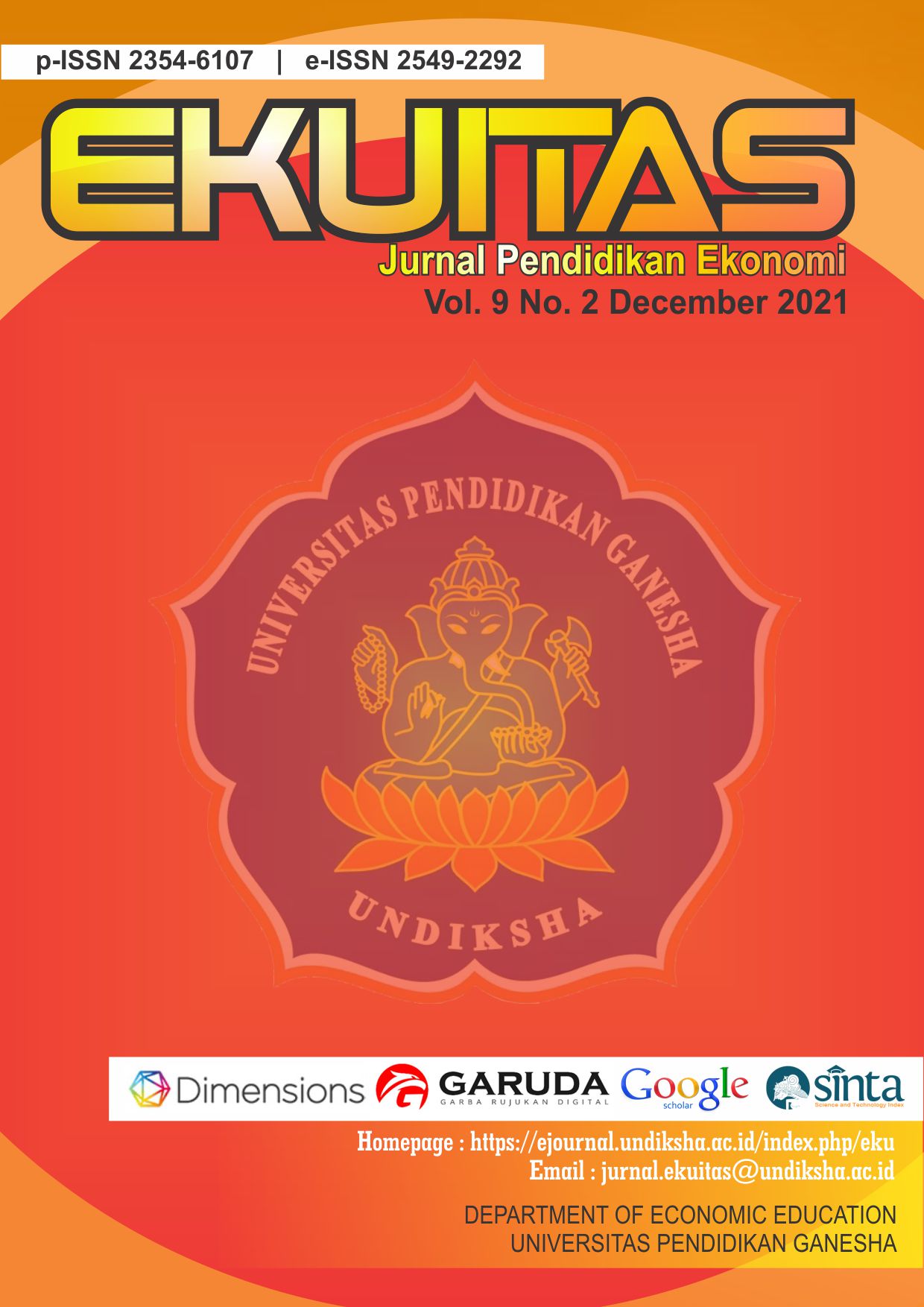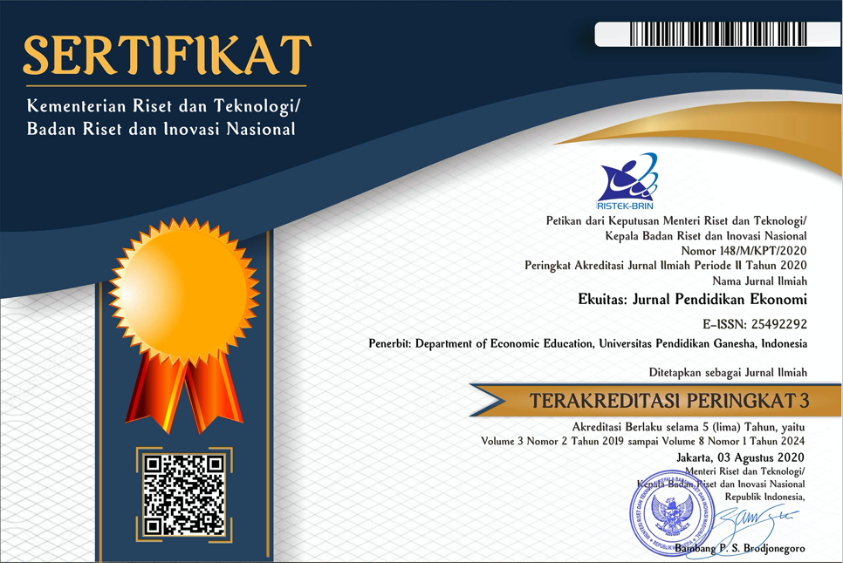Peningkatan Kualitas Pelayanan Publik Melalui Implementasi E-Government di Bali
DOI:
https://doi.org/10.23887/ekuitas.v9i2.42044Keywords:
e-government, digital transformation, public service, service qualityAbstract
E-Government is one of the information technology public services provided by the government to improve performance, efficiency, accountability, and public trust. However, there are still many public complaints about alleged administrative fraud in public services. The purpose of this study is to determine the relationship between digital transformation through the introduction of e-government and improving the quality of public services in Bali and which of these two factors affect the quality of public services through the introduction of e-government in Bali. This study was conducted on people in Bali Province who have used online public services. Data were collected through an online questionnaire instrument with a sample of 70 respondents. The analysis technique uses PLS analysis. The results of the analysis show that the role of the community, ICT and E-Government have a significant effect on the quality of public services in the Province of Bali. E-Government has an important role in improving the quality of public services optimally in the Province of Bali.
References
Abdillah, W., & Jogiyanto. (2015). Partial Least Square (PLS) Alternatif Structural Equation Modeling (SEM) dalam Penelitian Bisnis (ed. 1). Andi.
Alshehri, M., & Drew, S. (2010). E-government fundamentals. In IADIS international conference ICT, society and human
beings.Bertucci, G. (2008). UN e-Government Survey: From e-Government to Connected Governance. In New York: United Nations.
Chin, W. W. (1995). Partial least squares is to LISREL as principal components analysis is to common factor analysis. Technology studies, 2(2), 315-319.Ghozali, I. (2006). Aplikasi Analisis Multivariate Dengan Program SPSS (Cetakan Ke). Badan Penerbit Universitas Diponegoro.
Chin, W. W., Gopal, A., & Salisbury, W. D. (1997). Advancing the theory of adaptive structuration: The development of a scale to measure faithfulness of appropriation. Information systems research, 8(4), 342-367.
Cooper, D. R., Schindler, P. S., & Sun, J. (2006). Business research methods (Vol. 9, pp. 1-744). New York: Mcgraw-hill.Solimun. (2002). Structural Equation Modelling (SEM) Lisreldan Amos. FMIPA Universitas Brawijaya.
Ferdinand, A. 2014. Metode Penelitian Manajemen. Semarang: Universitas Diponegoro Press.
Nunnally, Bernstein, I. . (1994). Psychometric Theory (ed. 3). McGraw Hill.
Susanto, A., & Bahaweres, R. B. (2013, March). Preliminary research on e-government development overview: An assessment on e-Government capabilities in Indonesia. In 2013 International Conference of Information and Communication Technology (ICoICT) (pp. 444-447). IEEE.United Nations. (2020). E-Government Survey 2020. Digital Government in the Decade of action for sustainable development. In UN E-Government Knowledgebase.
Zaidi, S. F., Marir, F., & Siva, S. (2013, February). Assessing e-Government Service & Trust: Government to Citizen. In The Seventh International Conference on Digital Society (pp. 28-31).








